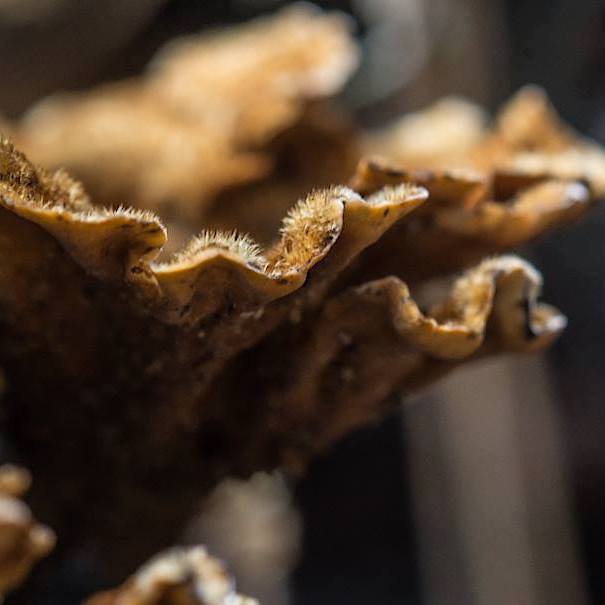
A fungus of dead wood from broadleaf trees, Hairy Curtain Crust can be found throughout the year. This colony was spotted on a fallen oak at Penrose.
Photo: Amanda Scott
Scientific name: Stereum hirsutum
Other common names: False Turkey Tail
What to look for:
• Appearance: Generally found in large groups. The fruiting bodies are bracket-shaped and obviously hairy (becoming smoother with age), with zoned markings and rippled edges (hence the common name referring to ‘curtain’). The spore-bearing surface is yellow- to orange-brown and smooth to slightly warty.
• Spores: Cylindrical/elliptical. Spore print is white.
• Where: On dead wood from broadleaf trees; widespread and very common.
• When: Year round.
• Similar species: Yellowing Curtain Crust (Stereum subtomentosum), which gets its name because it turns yellow if the upper surface is scratched. Turkey Tail (Trametes versicolor) is also similar.
Overlapping brackets of Hairy Curtain Crust (Stereum hirsutum) freely colonise dead wood (i.e. it is saprobic) from broadleaf trees: this is one of our most common fungi. Each fruiting body is usually no more than 10 cm across, but they mass together in fused and overlapping curtains across the wood surface. Colouring varies quite widely from yellow to orange to brown. There are always distinctive concentric colouration zones, paler towards the edges, and the pore-bearing surface beneath is also paler.

Did you know…?
…The genus name Stereum means ‘tough’ (fungi of this genus are awkward to tear). The species name hirsutum means ‘hairy’.
…Stereum hirsutum is sometimes parasitized by jelly fungi.
More information and references:
Buczacki, S., Shields, C., Ovenden, D., 2012. Collins Fungi Guide. Collins, London.
Published: January 2016
Author: Amanda Scott
Photos: Amanda Scott

